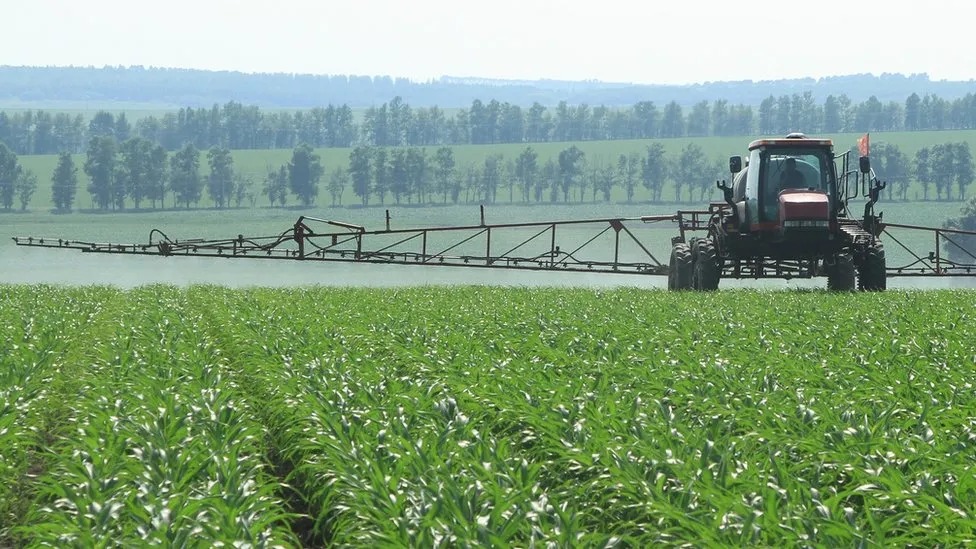In the 19th Century, Europeans realised what the Inca had known long before. Bird droppings, or guano, made a fantastic fertiliser.
And so sprung up a gigantic industry dedicated to the harvesting of guano from Latin American bird colonies, where there were huge piles off the stuff.
It was so rich in ammonia, the key ingredient, that a mere whiff could induce coughing and sneezing. Not exactly a pleasant cargo to ferry across the world.
As demand for fertiliser rose in the early 1900s, someone began to think, “Perhaps there's another way?” That someone was Fritz Haber, a German chemist who, along with Carl Bosch, developed the Haber-Bosch process for synthesising ammonia.
We have relied on that technology for more than 100 years. Without it, the world's population might be just half of what it is today – so vital is ammonia fertiliser for growing food.
But yet again, someone is asking whether we should do things differently because the Haber-Bosch process, when powered by fossil fuels, is notoriously polluting.
Ammonia production currently accounts for nearly 2% of global CO2 emissions. Now, a string of companies aim to prove that they can make green ammonia, or alternatives, without wrecking the climate.
“We have a well-sealed system, you don't smell it,” says Joe Beach, reassuringly. He is co-founder and chief executive of Starfire Energy, a US-based firm that is developing a means of producing ammonia from renewable energy, air and water. But, he argues, the pungency of ammonia is actually a benefit. If there's a leak, you'll soon know.
Ammonia, or NH3, is nothing more than nitrogen and hydrogen, both highly abundant elements. Earth's atmosphere is mostly nitrogen, and water is full of hydrogen. Starfire Energy uses electrolysers to split hydrogen from water and then feed it into a reactor along with nitrogen to make their ammonia.
The ingredients flow through a honeycomb structure laced with a catalyst – similar to the catalytic converter in your car's exhaust. This device encourages nitrogen to bond with hydrogen, and liquid ammonia is collected at the end of the process.
Crucially, the whole thing can, says Mr Beach, run on intermittent renewable energy such as wind and solar. “For a conventional ammonia plant to go from cold to full output is a two- to three-day process,” he says. “For us, it's about a two-hour process.”
Once started, the system can cycle on and off in a matter of minutes, following the vagaries of renewables. Starfire Energy aims to deliver its first commercial-scale devices, which could produce a tonne of ammonia per day, in 2025.
In general, green ammonia start-ups want to show that they can make ammonia production cleaner and easier to control. Plus, many, including Starfire Energy, hope to package the required tech in a space as small as a shipping container, so that it can be made near to the point of use – quite unlike the gargantuan Haber-Bosch plants operating today.
“We do want to make fertiliser on a small scale so we can use it more efficiently,” says Lea Winter at Yale University. Cutting the need to transport ammonia fertiliser over long-distances could further reduce emissions, she notes.
Another firm, Atmonia in Iceland, also wants to sell mini ammonia factories that fit inside shipping containers. Helga Flosadóttir, co-founder and chief executive, points out that while decarbonising fertiliser production is important, an even bigger goal lies in producing enough ammonia to use it as a fuel. That could help the world move away from fossil fuels for transportation, for example.
Douglas MacFarlane at Monash University in Australia is also chief scientific officer of Jupiter Ionics. He agrees that there is huge interest in ammonia as a fuel, though he adds that production would have to scale up significantly to be able to meet expected demand. “Those plants would have to be, ultimately, on the gigawatt scale,” he says.
— CutC by bbc.com


